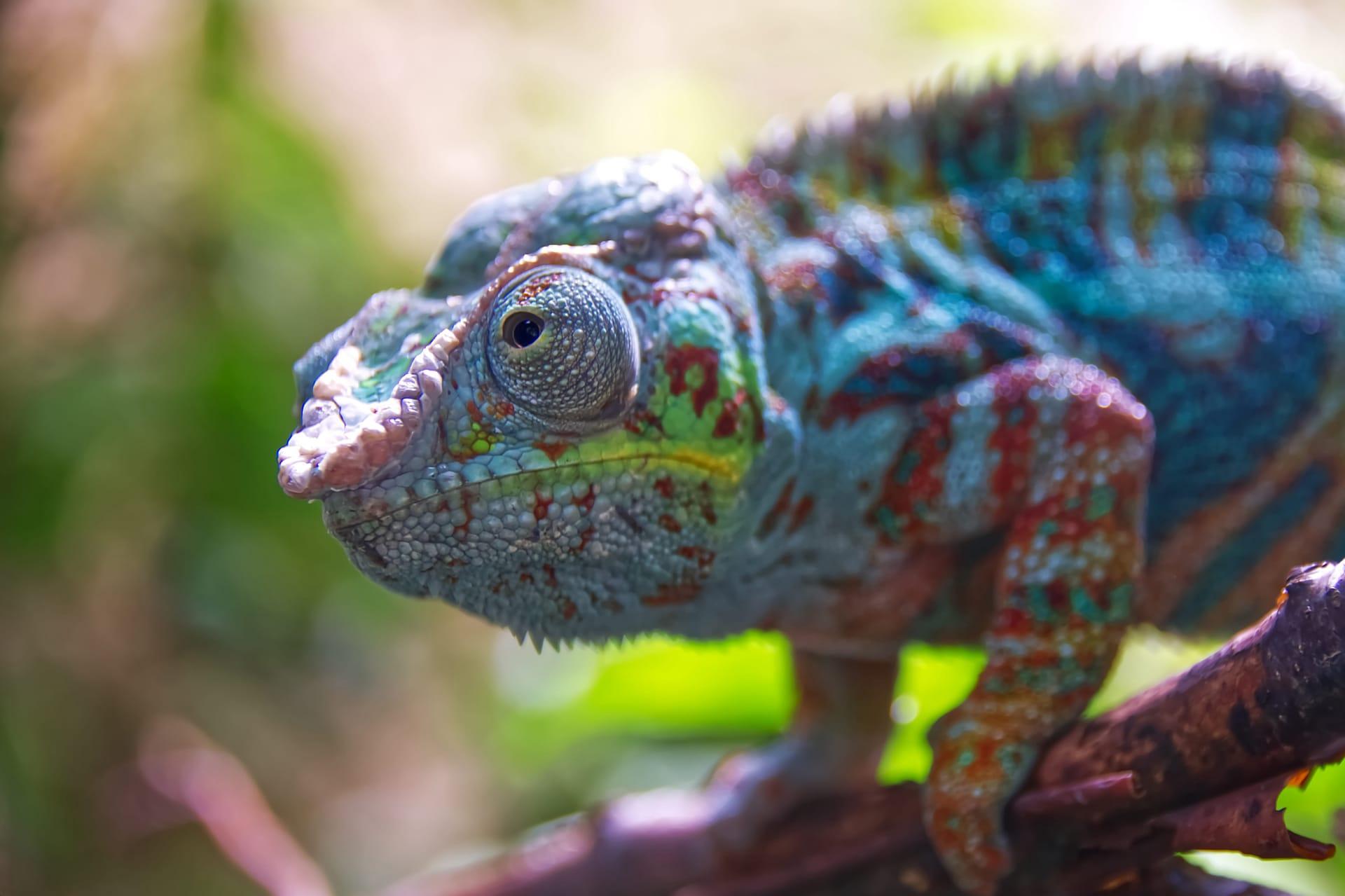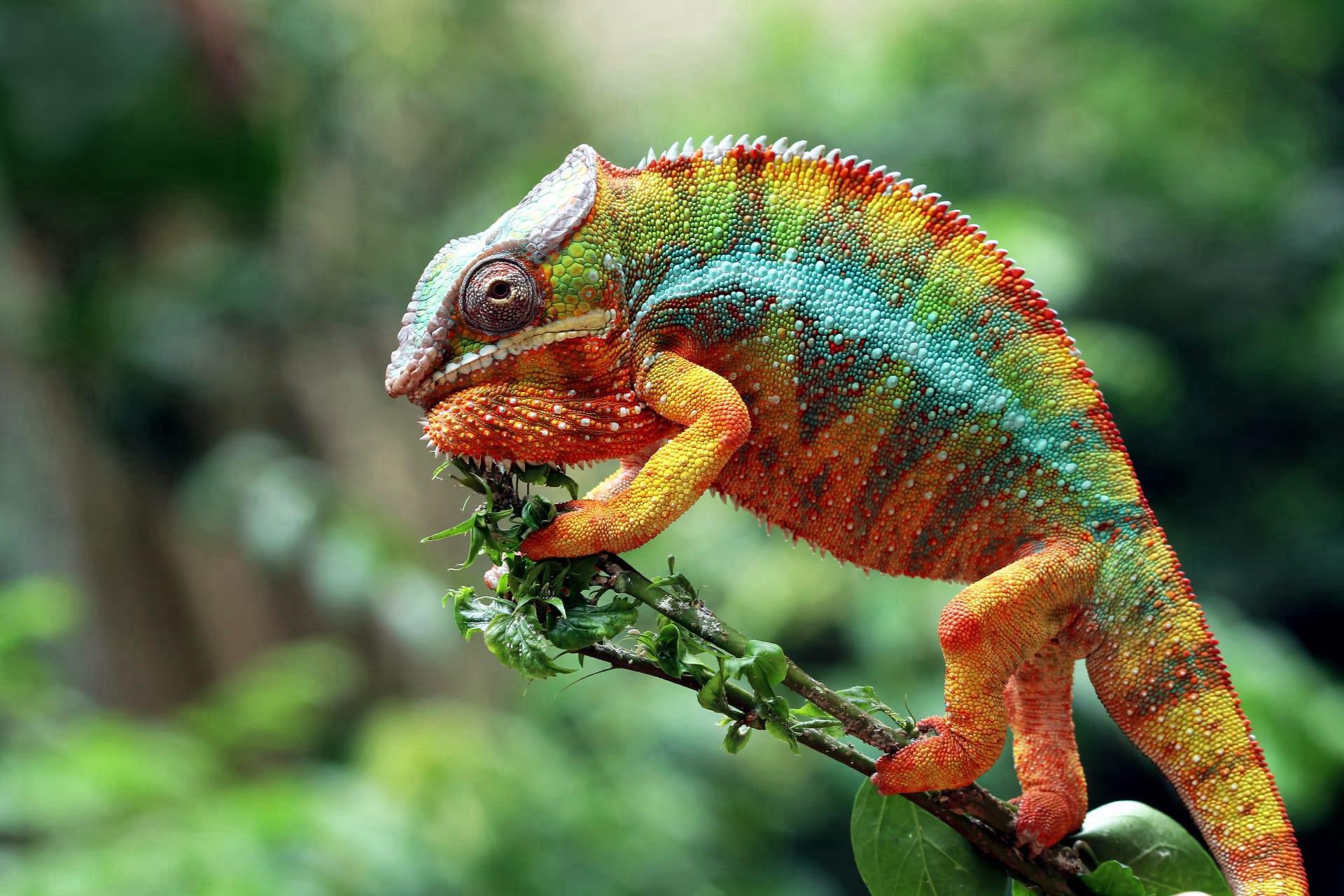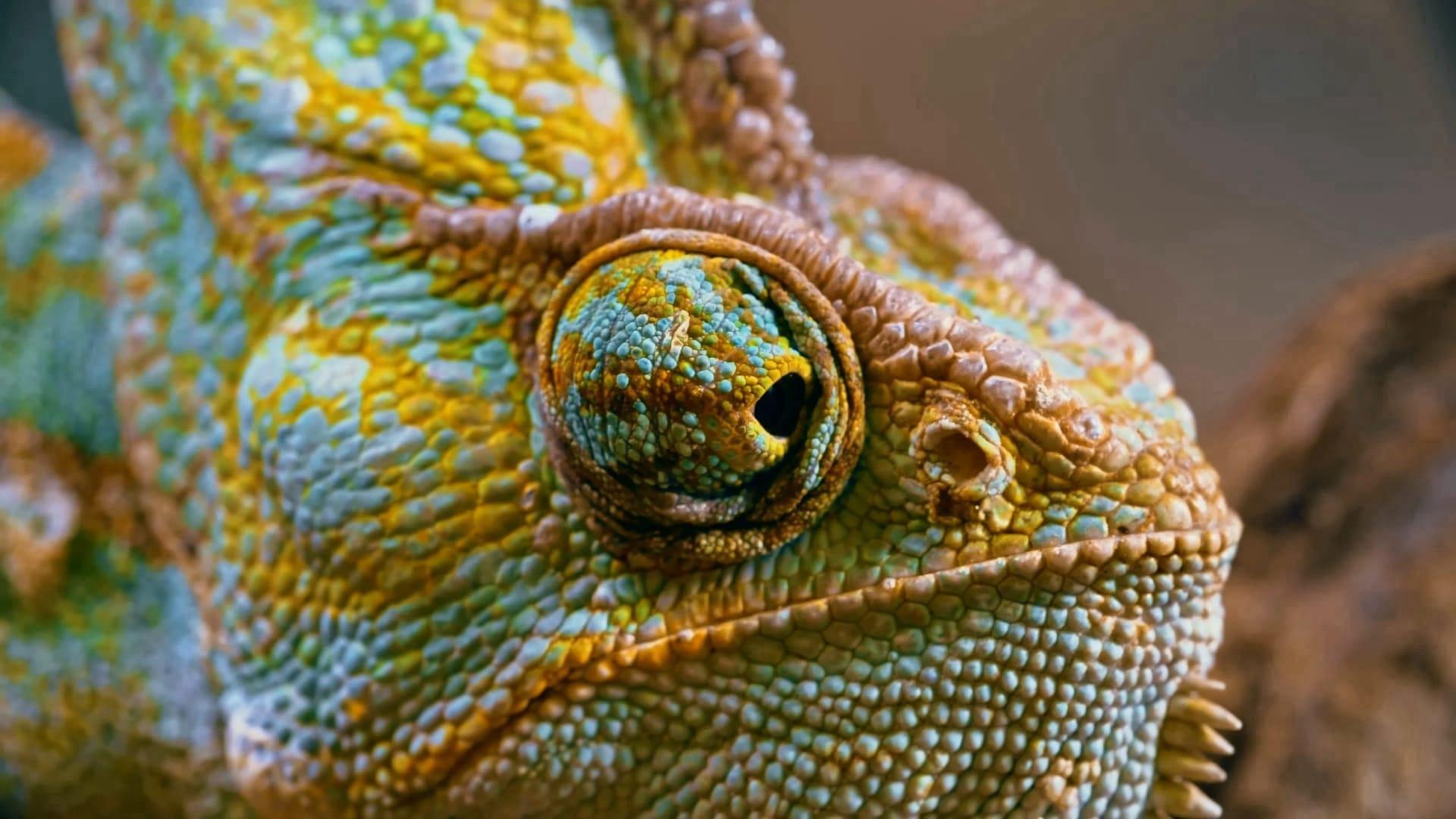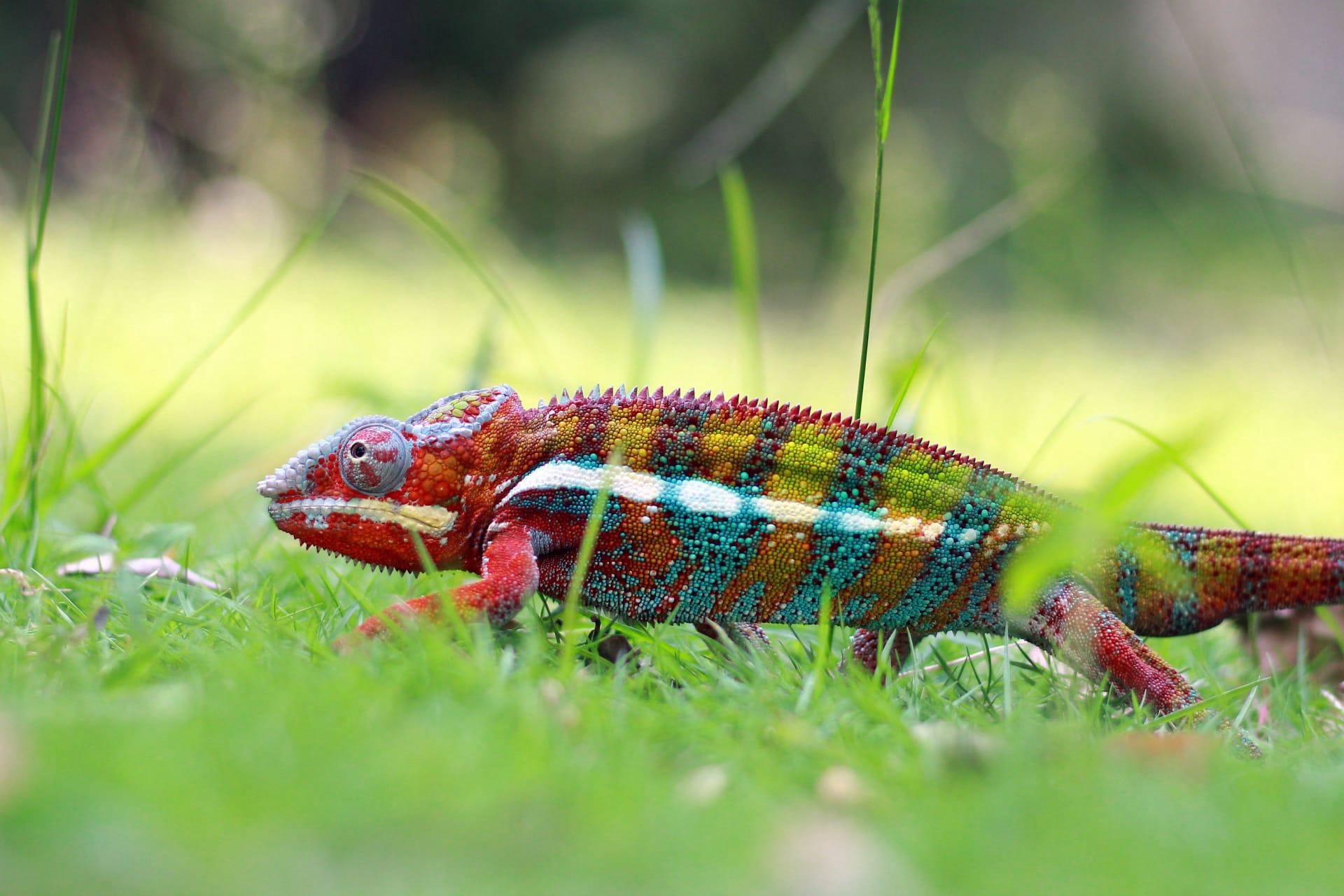Panther Chameleon
- Home /
- Mini Encyclopedia /
- Animal /
- Panther Chameleon
1
The Panther Chameleon, scientifically known as Furcifer pardalis, belongs to the family Chamaeleonidae. This species is known for its striking array of colors and its ability to change hues. Originating from the island of Madagascar, Panther Chameleons have been a subject of fascination due to their unique color variations, which can range from blues and greens to reds and oranges. These color shifts are not just for show; they play a crucial role in communication and temperature regulation.
In their natural habitat, Panther Chameleons are predominantly found in Madagascar, an island nation off the southeast coast of Africa. This exotic location boasts a variety of ecosystems, from rainforests to coastal regions, providing an ideal environment for these reptiles. Panther Chameleons thrive in warm, humid conditions and are often found in trees and bushes. They are territorial creatures, primarily dwelling in the northern and eastern parts of the island, with their distribution closely tied to the island's diverse topography and microclimates.

2
Question: Do Panther Chameleons change their color to blend in with their surroundings?
Answer: A common misconception about Panther Chameleons is that they change color primarily for camouflage. However, research shows that their color change is more closely related to temperature regulation and social signaling. When a Panther Chameleon is cold, it may turn to a darker color to absorb more heat. In contrast, lighter colors are adopted to reflect sunlight when it's hot. Socially, these color changes communicate moods and intentions to other chameleons. For example, vibrant colors can be a display of dominance or a way to attract mates, while darker colors might indicate stress or aggression.

3
Panther Chameleons have developed several survival strategies to thrive in their environment. One key strategy is their remarkable tongue, which can be as long as their body. This tongue shoots out at high speed to capture prey, primarily consisting of insects. This quick and efficient hunting method allows them to catch food without moving much, conserving energy. Their eyes, which can move independently, enable them to have a 360-degree view of their surroundings, making them excellent at spotting prey and predators.
Another survival tactic is their ability to change color. While this is commonly thought to be for camouflage, as previously mentioned, it serves more for communication and temperature regulation. This ability allows them to adapt to varying temperatures throughout the day and also to signal their physiological and emotional states to other chameleons, playing a crucial role in social interactions and territorial disputes.

4
In the ecosystem, Panther Chameleons play a vital role as both predators and prey. As insectivores, they help control insect populations, maintaining a balance in their habitat. This pest control is beneficial not only for the environment but also for local agriculture. By feeding on insects, they reduce the need for pesticides, which can have harmful side effects on the ecosystem.
Moreover, Panther Chameleons are an indicator species, meaning their health reflects the health of their environment. A decline in their population can signal ecological problems like habitat destruction or climate change. Their presence and health status provide valuable information for conservation efforts, highlighting the importance of maintaining their natural habitats and the overall health of the ecosystem.

5
Film: One notable documentary featuring the Panther Chameleon is "Island of Eden," produced in the United States in 2016. This documentary explores the unique wildlife of Madagascar, focusing on how these animals, including the Panther Chameleon, have adapted to the island's diverse ecosystems. The film provides a vivid portrayal of the chameleon's life, from its hunting tactics to its intricate social behaviors.
Book: "Chameleons of Madagascar" by Colin Stevenson, published in the UK in 2018, dives deep into the world of Madagascar's chameleons. Stevenson, a renowned herpetologist, provides a comprehensive guide to these creatures, with a particular focus on the Panther Chameleon. The book details their behavior, physiology, and conservation status, enriched with stunning photographs and scientific insights.
Book: Another significant work is "The Secret Life of Chameleons" by Angela Turner, published in Canada in 2020. This book offers an in-depth look into the fascinating world of chameleons, with a special emphasis on the Panther Chameleon. Turner combines scientific research with engaging narratives, covering everything from their evolutionary history to the challenges they face in the wild, making it an enlightening read for both scientists and nature enthusiasts.